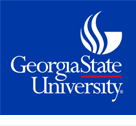Date of Award
5-14-2021
Degree Type
Dissertation
Degree Name
Doctor of Philosophy (PhD)
Department
Middle and Secondary Education
First Advisor
Dr. David Stinson
Second Advisor
Dr. Peggy Albers
Third Advisor
Dr. Jennifer Esposito
Fourth Advisor
Dr. Viviana Cortes
Abstract
The purpose of this theory-building project was to generate a scientific platform through which society might stop using the data from standardized mathematics assessments to evaluate and scrutinize students and instead evaluate, scrutinize, and improve the processes and activities through which students engage in mathematics learning (Hilliard, 1994: Kozol, 2005; Ladson-Billings, 1997; Martin, 2000; Steele, 1992). In particular, this project focused on the syntax, semantics, and pragmatics (Peirce, 1902; Saussure, 1908/1998) of mathematics situations and the activities through which students might leverage these tools to construct their own mathematics knowledge in an effort to achieve mathematics proficiency (Kilpatrick, Swafford, & Findell, 2001). The participants of this project were self-identified African American male and female middle school students located in the southeastern region of the Unite States.
This theory-building project used a re-engineered teaching experiment methodology (Steffe, 1991) located within a sociocultural and radical constructivist ideological frame (von Glasersfeld, 1983; Vygotsky, 1930/1978). More specifically, the students were mentored through a cycle of exploration, introduction, application, and inquiry when given mathematical situations. Data from observations and Socratic inquiries were collected and analyzed using cultural-historical activity theory (CHAT; Vygotsky, 1930/1978) and a newly developed coding protocol in order to seek aspects of metacognition, cognition, and mathematics proficiency (Saldaña, 2016).
The reporting and analysis of the data revealed that the students could demonstrate progressive acts in their pursuit of mathematics proficiency. How the students were able to make such achievements were to be found, in part, in how they understood the semiotic aspects of any given mathematical situation––its syntax, semantics, and problem-solving elements. In addition, the students gave deeper and intentional attention to the metacognitive knowledge and metacognitive skills necessary to emphasize these semiotic aspects (Veenman & Spaan, 2005). Consistently, the responses from and the observations of each student were unique representations of their experiential selves. In the end, the aim of this theory-building project was to capture these unique representations and determine the specifics that might serve as components of a preliminary mathematics learning model.
Recommended Citation
Porter, Elijah II, "Semiotics and Symbiosis - "Gap-Closing": How Signs, Symbols, and Structure Impact the Teaching and Learning of Mathematics for Middle School African American Students." Dissertation, Georgia State University, 2021.
doi: https://doi.org/10.57709/22798431
DOI
https://doi.org/10.57709/22798431
File Upload Confirmation
1

